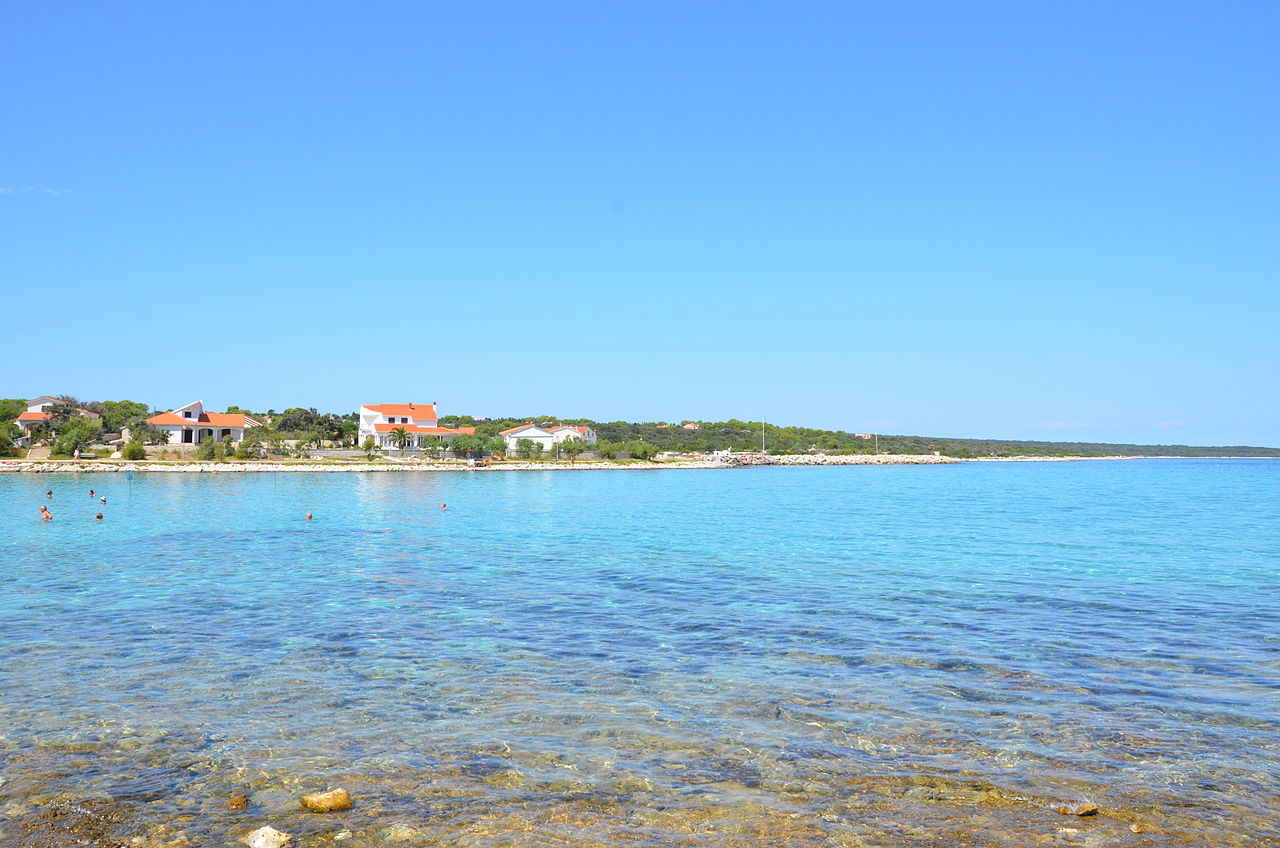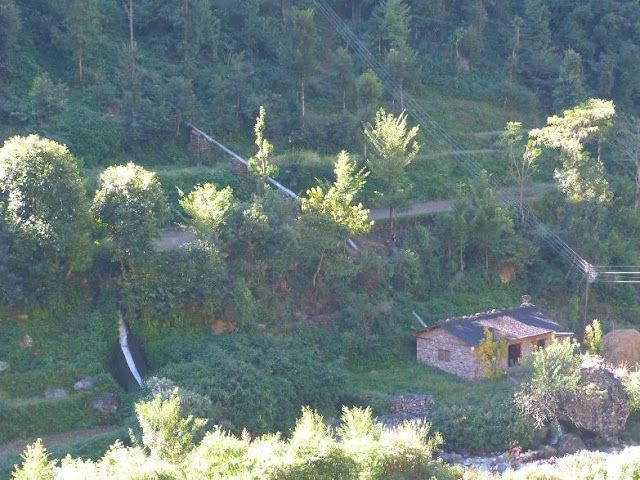 |
| Record breaking temperatures in 2018 led to drought in many European countries. Image credit Wikimedia Domain Mimikry11. |
World Water Day draws attention to the global water crisis and addresses why so many people are being left behind when it comes to having access to safe water. The UN estimates that globally 80% of people who have to use unsafe and unprotected water sources live in rural areas. This can leave households, schools, workplaces and farms struggling to survive. On farms water is vital for the production of food and is used in a huge range of processes, including irrigation and watering livestock. In this blogpost I will lightly review the current issues around water in agriculture and highlight some exciting research projects that may offer potential solutions.
What is the water crisis?
The UN Sustainable Development Goal 6 is to ensure that all people have access to sustainable, safe water by 2030. Unfortunately, we’re a long way off achieving this goal as a recent report from UNICEF/WHO estimates that there are currently 2.1 billion people living without access to safe water in their homes and workplaces. Another report estimates that 71% of the global population experiences severe water scarcity during at least one month of the year. In recent years we have seen water risks increase, with severe droughts in Africa, China, Europe, India and the US. In sub-Saharan Africa, the number of record breaking dry months increased by 50% from 1980 to 2013. Unfortunately droughts, floods and rising sea levels are predicted to continue and become more unpredictable under climate change scenario models and as the global population continues to grow, there will be increasing demands on water supplies. Increases in water scarcity are likely to lead to increases in political and economic instability, conflict and migration.
Why is water important to agriculture?
In agriculture, water is vital for growing crops and sustaining livestock. Farmers use water to irrigate, apply pesticides and fertilizer and protect from heat and frost. This heavy reliance means that when water supplies run out, farmers are unable to effectively maintain their crops and livestock, leading to food insecurity. Drought stress can result in yield losses of 64% in rice, 50% in chickpea, 18 – 32% in potato. Drought has particularly devastating effects in tropical and sub-tropical regions, where climate change is predicted to have the biggest impact.
The amount of water it takes to produce food and drink products is pretty shocking. Beef production in particular is associated with high levels of water usage. It is estimated that the global average water footprint of a 150g beef burger is 2350 litres; despite producing just 5% of the world’s food calories, beef production is reported to create 40% of the water scarcity burden. Although there are big variations in the environmental impacts of beef farming, with grassland fed, rotational systems being less intensive than grain fed herds on deforested land.
Where does water used for agriculture come from?
The water that is used in agriculture comes from a range of sources, including surface and ground water supplies, rivers and streams, open canals, ponds, reservoirs and municipal systems. Globally, the FAO estimates that agriculture accounts for 70% of freshwater withdrawals, which is predominately used for irrigation. In many areas the high level of groundwater used for irrigation is unsustainable, leading to depletion. For instance, the OECD estimates that groundwater supplies 60% of India’s agricultural water needs but groundwater sources are suffering from depletion and pollution in 60% of states. A big problem is that irrigation is often highly inefficient; in the US the FAO estimates that the amount of irrigated water that is actually used by plants is only 56%. Large amounts of energy are also needed to withdraw, treat and supply agricultural water, leading to significant greenhouse gas (GHG) emissions.
What happens to agricultural water after use?
As well as depleting freshwater supplies, agriculture can also pollute them, with runoff containing large quantities of nutrients, antibiotics, growth hormones and other chemicals. This in turn has big affects on human health through contamination of surface and ground water with heavy metals, nitrate and pathogens and in the environment; it can cause algal blooms, dead zones and acidification of waterways. Combined these issues mean that better management of water in agriculture has huge potential for improving sustainability, climate resilience and food security, whilst reducing emissions and pollution.
What are the potential solutions?
Thankfully there are many innovative projects that are working to improve issues around water in agriculture. Below are a few examples that I find particularly promising.
How can technology help?
To reduce water wastage on farms, agri-technology is being developed whereby multiple wireless sensors detect soil moisture and evapotranspiration. The sensors feed this information to a cloud-based system that automatically determines precisely how much water to use in different parts of the field, leading to increased yields and saving water. Farmers can get water management recommendations via a smartphone app and the information automatically instructs irrigation systems. At a larger scale, these data systems can feed into a regional crop water demand model to inform decision-making on agricultural policies and management practices, and to provide early warnings of potential flood and drought risks.
 |
| Sensor that detects leaf moisture levels. Image credit: Wikimedia Domain Massimiliano Lincetto |
Irrigation systems are also being made more efficient; one study found that simply changing from surface sprinklers to drip irrigation that applies water directly to plant roots through low-pressure piping, reduced non-beneficial water wastage by 76%, while maintaining yield production. In arid areas these systems can be used for a technique called partial root drying, whereby water is supplied to alternate side of the roots, the water stressed side then sends signals to close stomatal pores which reduces water lost through evapotranspiration.
These efficient precision irrigation systems are becoming cheaper and easier for farmers to use. However in tropical and sub-tropical areas, the technology can be difficult to apply smallholder farming, where there is often insufficient Internet connectivity, expertise, capital investment, and supply of energy and water. Several precision agriculture projects are working to overcome these challenges to promote efficient use of irrigation water, including in the semi-arid Pavagada region of India, the Gash Delta region of Sudan and São Paulo, Brazil. In Nepal, a Water Resources Information System has been established that collects data to inform river management, whereas in Bangladesh hundreds of solar-fuelled irrigation pumps have been installed that simultaneously reduce reliance on fossil fuels and reduce GHG emissions.
Hydroponic systems whereby plants are grown in water containing nutrients are becoming increasingly popular; the global market for hydroponics is projected to reach £325 million by 2020. Compared with land-based agriculture, hydroponics uses less land; causes less pollution and soil erosion and so these systems are less vulnerable to climate change. Critically they also reduce water use; once the initial water requirements are met, the closed-system recycles water and there is less evapotranspiration. The adoption of these systems is predicted to occur predominately in water stressed regions of the Middle East and Africa and in highly urbanised countries such as Israel, Japan and the Netherlands.
How can researching traditional approaches help?
It’s not just about agri-tech; there are relatively simple, traditional ways to tackle water issues in agriculture. To protect against drought, farmers can harvest and store rainwater during heavy downpours by building ponds and storage reservoirs. To reduce water wastage, farmers can improve the ability of soil to absorb and hold water through reducing tillage and using rotational livestock grazing, compost, mulch and cover crops. Wetlands, grasslands and riparian buffers can be managed to protect against floods, prevent waterlogging of crops and improve water quality. Increasingly these traditional methods valued and research is being done to optimise them. For instance a novel forage grass hybrid has been developed that is more resilient to water stress and can reduce runoff by 43 – 51% compared with conventional grass cultivars.
 |
| A small-scale farmer in Kenya who is harvest rainwater. Image credit: Wikimedia Domain Timothy Mburu. |
How can crop and livestock breeding help?
In the past, crop and livestock varieties have been selected for high productivity. However, these varieties are often severely affected by changes in climate and extreme weather events such as drought and require high levels of water and nutrients. To improve resilience and sustainability, breeders increasingly need to also select for stress responses and resource use efficiency. In crops, drought resilience and water use efficiency is influenced by many traits, including root and shoot architecture, stomatal density and thickness of the waxy cuticle that covers leaves and reduces evapotranspiration. The complexity of these traits makes breeding crops for drought resilience challenging, as many different groups of genes need to be selected for. To deal with this, the International Rice Research Institute’s Green Super Rice project has been crossing high-yielding parent lines with hundreds of diverse varieties to produce new high-yielding varieties that require less water, fertilisers and pesticides. These varieties are now being delivered to farmers in countries across Asia and Africa. Similarly, climate change resilience is also vital for current and future livestock farming. Projects run by Professor Eileen Wall (SRUC) have identified novel traits and genes associated with drought and heat resilience in UK and African dairy cattle, which can be incorporated into breeding programmes.
What are the incentives?
Although these projects might sound promising, without incentives to drive their uptake it may take a long time for real impacts to come to fruition. Unfortunately, in some countries such as India there can be a lack of monetary incentives that would effectively enable farmers to take up new water management technology and practices. In the EU, the Common Agricultural Policy (CAP) has allocated funds to support farmers in complying with ‘greening rules’ that improve sustainability, preserve ecosystems and efficient use of natural resources, including water. Farmers across the EU receive CAP payments for environmentally friendly farming practices, such as crop diversification and maintaining permanent grassland.
In many European countries, there is increasing consumer demand for sustainably farmed food products. This is driving large and small manufacturers to seek out sustainable suppliers and so farmers are incentivised to improve the sustainability of their farming practices so that they can be certified. For instance the Sustainable Farming Assurance Programme requires farmers to follow good agricultural and environmental protection practices, including sustainable water use. In the coming years, more food products are likely to have water foot print labels that provide the consumer with information on the amount of water used during production and processing. This places considerable power in the hands of the consumer and large manufacturers are responding. For instance, by 2020 Kellogg has pledged to buy ten priority ingredients (corn, wheat, rice, potatoes, sugar and cocoa) only from farms that prioritise protecting water supplies, as well as using fertilizers safely, reducing emissions, and improving soil health. And Pepsico has created sustainable agriculture sourcing programmes that aim to help farmers improve water and soil resource management, protect water supplies, minimise emissions and improve soil health.
What can we do?
There are ways to take responsibility for reducing our own water footprints, including reducing meat and animal production consumption, reducing food wastage and buying sustainably farmed products. Finally, we can all get involved with communicating and promoting the importance of water in agriculture so that more people are aware of the issues. Head to the World Water Day website to find out about resources and events that may be happening near you.
——————————
This blog is written by Caboteer Dr Katie Tomlinson, who recently completed her PhD at the University of Bristol on cassava brown streak disease. Katie is now an Innovation and Skills manager at the BBSRC and is running the Sustainable Agriculture Research and Innovation Club. Views presented in this blog are her own. You can follow Katie on Twitter: @KatieTomlinson4.
 |
| Dr Katie Tomlinson |



























